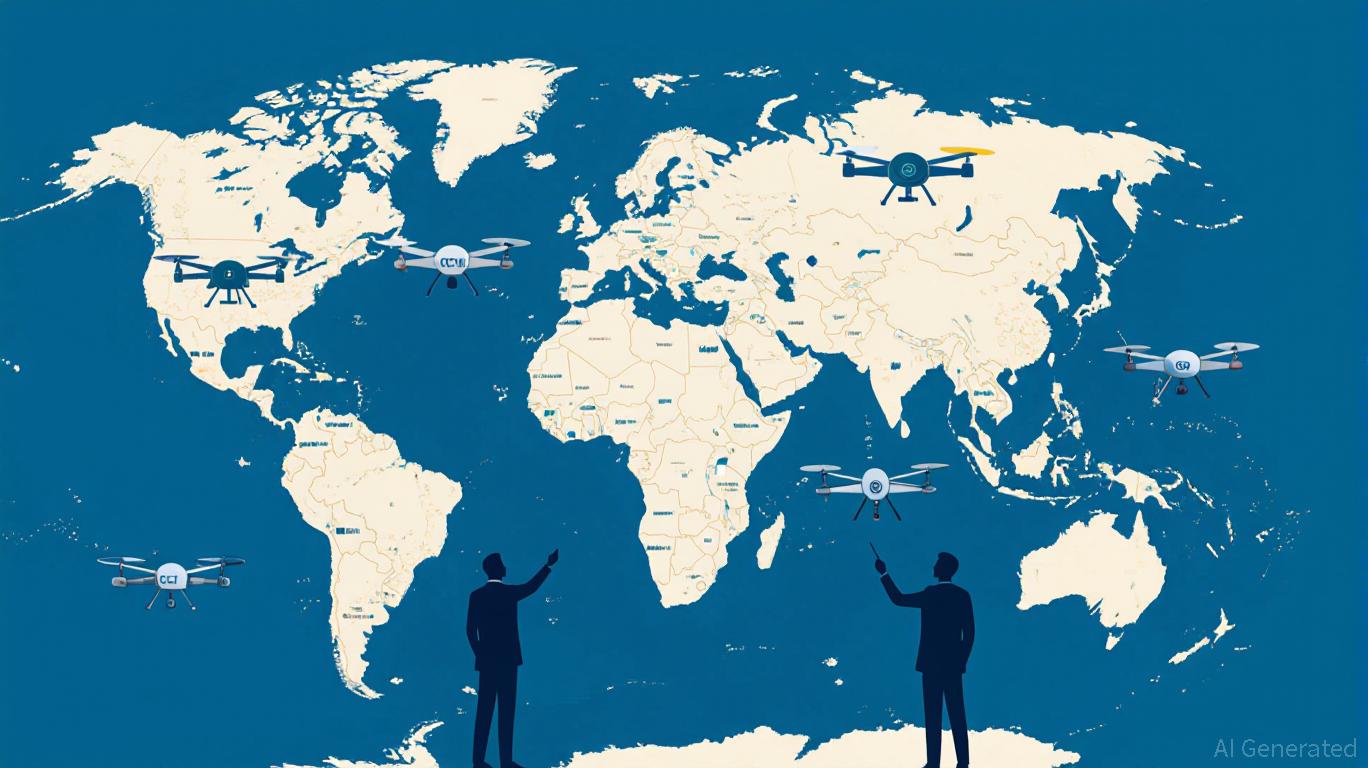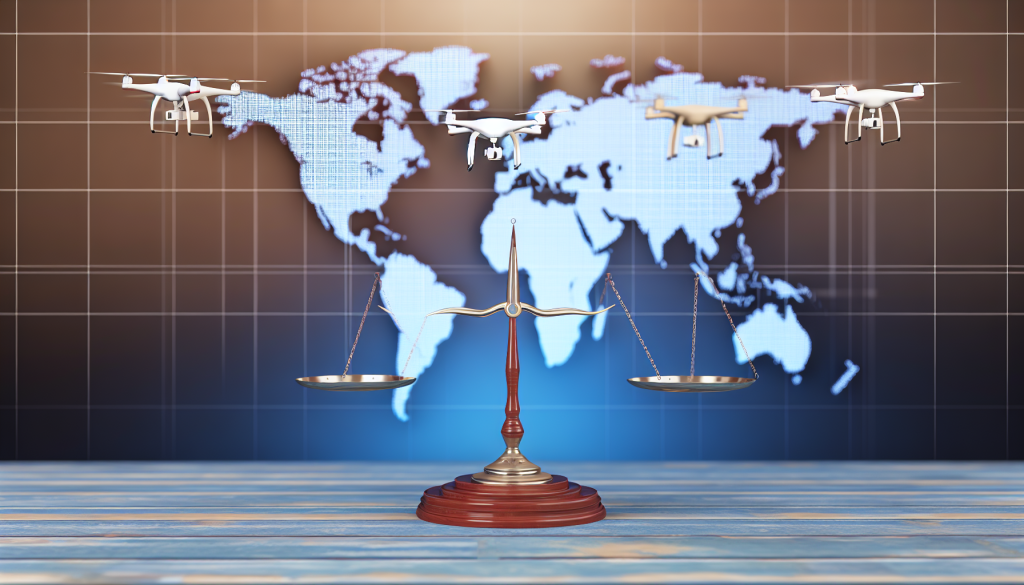The U.S. Drone Industry: Navigating New Frontiers in Defense and Ethics

The U.S. drone industry is at a critical juncture, driven by significant changes in export policy that began under the Trump administration and have continued through the Biden administration. This transformation is anchored in the reinterpretation of the Missile Technology Control Regime (MTCR) in 2020, which has reshaped the landscape for military drone exports.
The Shift in Drone Export Policy
Under the Trump administration, the U.S. relaxed barriers concerning the export of large military drones, reclassifying slower-moving systems, such as the General Atomics MQ-9 Reaper and Northrop Grumman RQ-4 Global Hawk, as less restricted Category II items. This shift allowed for case-by-case approvals for drones capable of carrying over 500 kg payloads across distances longer than 300 km. This policy easing was expanded in 2025 under Biden, bringing non-MTCR member states into the fold for space-launch vehicle programs. As a result, defense contractors are gaining access to new international markets, but this raises complex questions of geopolitical stability and ethical responsibility.
Economic Opportunities for Defense Contractors
The global military drone market is poised for substantial growth, projected to surge from $45.42 billion in 2025 to $96.6 billion by 2032. A significant force driving this growth is the increasing defense budgets across various nations and the demand for real-time intelligence in conflict zones. Firms like General Atomics and Northrop Grumman stand ready to seize these opportunities. For instance, General Atomics has recently secured a staggering $30 billion contract with the Air Force for its drone systems, which includes the YFQ-42A Collaborative Combat Aircraft designed for autonomous operations. Similarly, Northrop Grumman has fortified its presence in the Asia-Pacific region, benefiting from a $1.4 billion contract for MQ-4C Triton UAVs.
These reinterpretations of the MTCR have facilitated the expansion of export possibilities. The MQ-9 Reaper, now available to NATO allies and Asian partners, is being utilized for critical Intelligence, Surveillance, and Reconnaissance (ISR) operations. Moreover, Northrop Grumman’s XQ-58A Valkyrie has drawn interest from Middle Eastern clients aiming to modernize their air forces, illustrating how U.S. defense contractors are broadening their operational reach.
Geopolitical Risks of Relaxed Exports
The loosening of export controls brings with it a series of geopolitical concerns. Critics argue that these relaxed regulations could inadvertently facilitate adversaries’ access to sensitive technologies, particularly when framed as space-launch programs. China, for example, has advanced rapidly in armed drone exports while circumventing MTCR stipulations, thereby undermining U.S. dominance in key regions like the Middle East and Southeast Asia.
The U.S. response has involved ramping up exports, yet this strategy may spark a “race to the bottom,” where allied nations prioritize cost over ethical implications. Additionally, the potential misuse of drones is a growing concern. Reports have surfaced regarding the use of MQ-9 Reapers by Saudi Arabia in Yemen, resulting in civilian casualties and violations of human rights, raising eyebrows among international advocacy groups.
Ethical Implications for Autonomous Warfare
The integration of AI-driven targeting systems in platforms such as the XQ-58A has further complicated ethical discussions surrounding autonomous warfare. As the capabilities of military drones evolve, so too does the accountability concerning their use. Many export destinations lack adequate oversight mechanisms, heightening the risk that these technologies could fall into the hands of rogue nations or non-state actors, complicating the global security landscape.
Human rights advocates warn that these emerging technologies could enable not only military advancements but also egregious abuses of power. This dual-use nature of drone technology amplifies the ethical dilemma surrounding their proliferation, spotlighting the urgent need for robust export controls and compliance frameworks.
Investment Opportunities Amidst the Complexity
Despite the apparent risks, investors are eyeing the U.S. drone sector as a fertile ground for growth intertwined with geopolitical leverage. Companies like General Atomics and Northrop Grumman are channeling significant resources into next-generation technologies. For example, General Atomics is delving into AI-enhanced swarm capabilities and digital engineering solutions aimed at cost reduction. Northrop Grumman is advancing its stealth projects, such as the B-21 Raider and RQ-180, which promise to revolutionize long-range strike operations.
However, prospective investors face considerable challenges. The risks of drone proliferation could destabilize volatile regions, potentially inciting retaliatory measures from competing powers like China. Furthermore, regulatory changes—such as potential backlash from Congress regarding MTCR reinterpretations—could disrupt the increasingly vital export channels. A prudent investment approach would involve selecting companies with diversified portfolios and strong ethical governance frameworks to mitigate potential risks.
Navigating a Complex Future
The transformation in U.S. drone export policy is orchestrating a pivotal moment for both defense contractors and global security dynamics. As the industry accelerates toward unprecedented growth, the pressing issues of ethical considerations and geopolitical ramifications are likely to come into sharper focus. Understanding how to balance these opportunities against the risks posed by drone proliferation will be critical for stakeholders across the board, from investors to policymakers. As we navigate this complex landscape, the implications of these technological advancements will undoubtedly redefine the nature of modern warfare and international relations.

